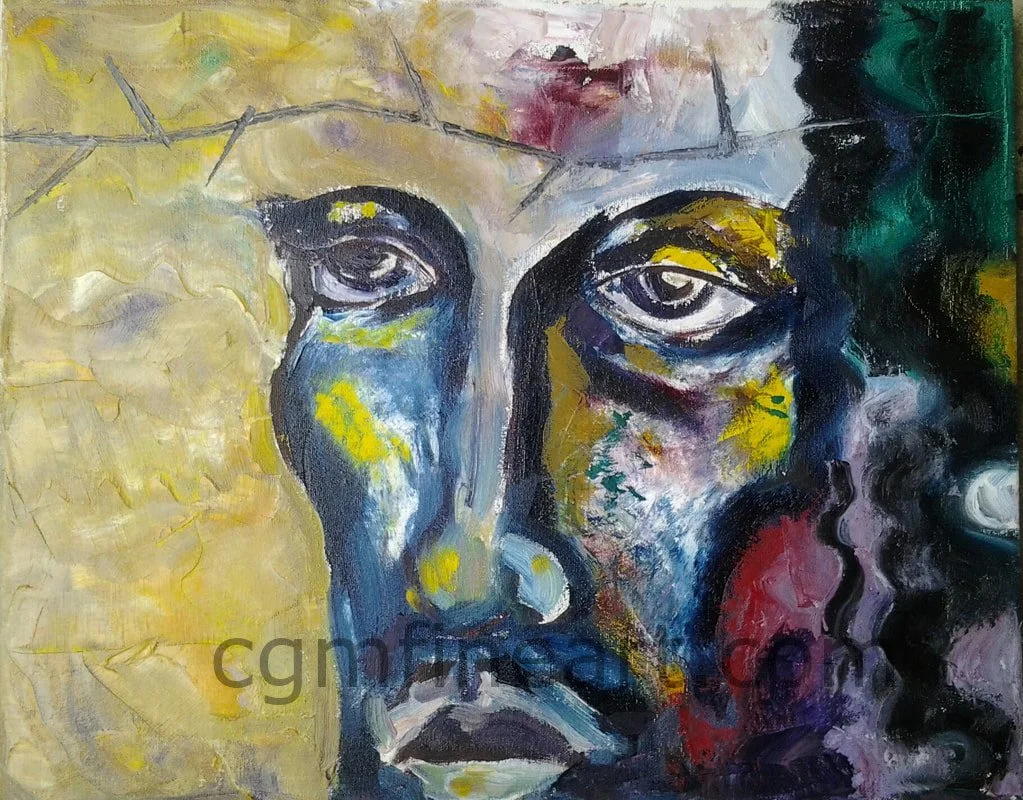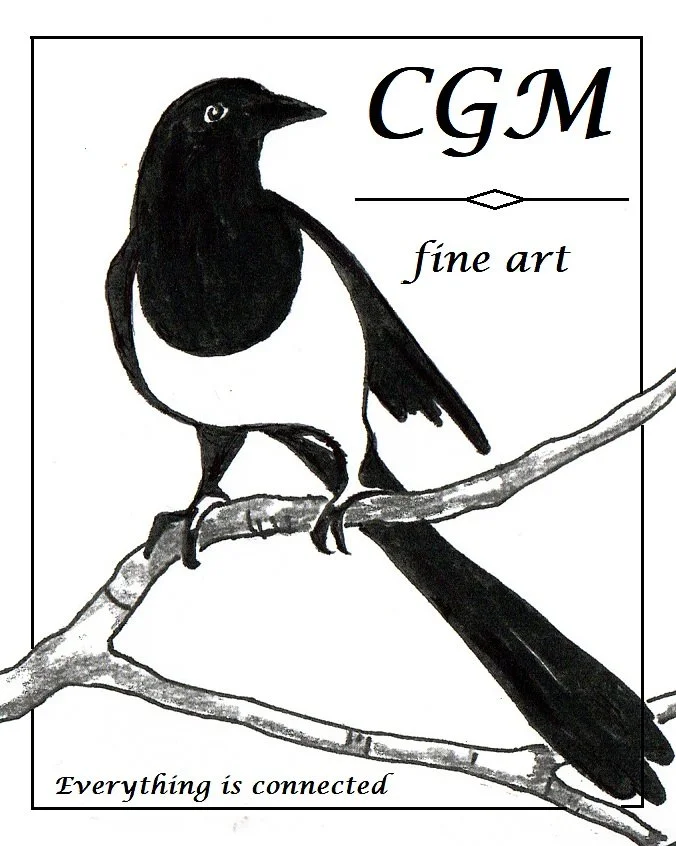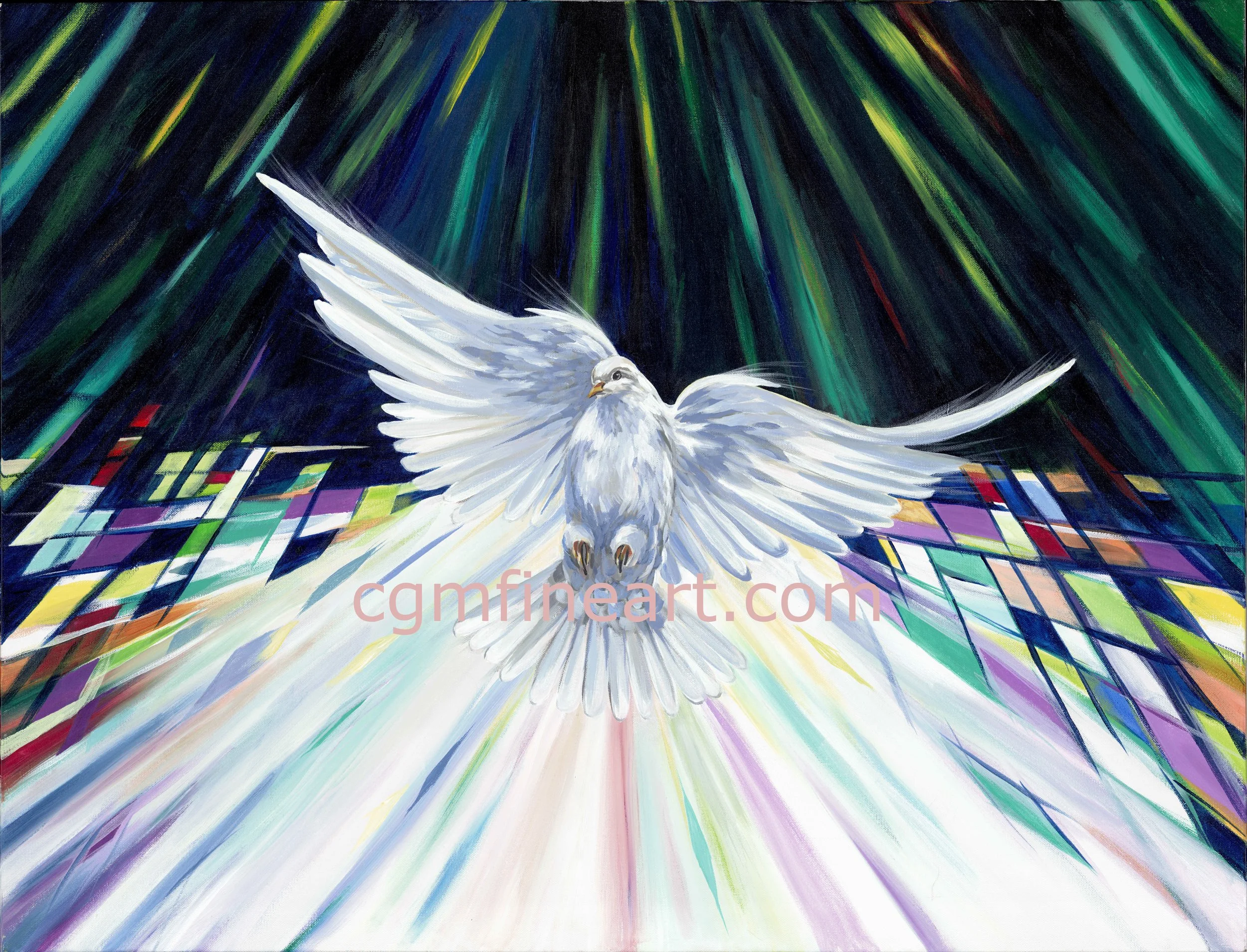 Image 1 of 1
Image 1 of 1


Divine Image
In Divine Image, Jesus is rendered in a fractured, emotionally raw portrayal that transcends traditional images. The composition splits his face across opposing fields of color—one side bathed in warm ochres and yellows, the other engulfed in dark greens, purples, and reds—symbolizing the tension between divinity and humanity, light and suffering.
His anguished eyes, painted with haunting clarity, draw the viewer into his psychological torment. The crown of thorns is barely sketched but unmistakable, cutting across the canvas like a quiet accusation. This is not a triumphant Christ but a vulnerable, broken figure—portrayed mid-passion, in the throes of betrayal, isolation, and impending death.
The abstraction of the right side of the face, with fluid, almost dissolving forms, suggests the erosion of the self—Jesus becoming sacrifice. Meanwhile, bold strokes of color, particularly the bruised reds and electric blues, evoke both physical violence and spiritual transcendence.
By confronting the brutality of the crucifixion and the dignity of his resolve, Divine Image challenges viewers to meditate on the cost of grace and the depth of human sorrow. It is a visual prayer—agonized, fractured, and profoundly alive.
In Divine Image, Jesus is rendered in a fractured, emotionally raw portrayal that transcends traditional images. The composition splits his face across opposing fields of color—one side bathed in warm ochres and yellows, the other engulfed in dark greens, purples, and reds—symbolizing the tension between divinity and humanity, light and suffering.
His anguished eyes, painted with haunting clarity, draw the viewer into his psychological torment. The crown of thorns is barely sketched but unmistakable, cutting across the canvas like a quiet accusation. This is not a triumphant Christ but a vulnerable, broken figure—portrayed mid-passion, in the throes of betrayal, isolation, and impending death.
The abstraction of the right side of the face, with fluid, almost dissolving forms, suggests the erosion of the self—Jesus becoming sacrifice. Meanwhile, bold strokes of color, particularly the bruised reds and electric blues, evoke both physical violence and spiritual transcendence.
By confronting the brutality of the crucifixion and the dignity of his resolve, Divine Image challenges viewers to meditate on the cost of grace and the depth of human sorrow. It is a visual prayer—agonized, fractured, and profoundly alive.





